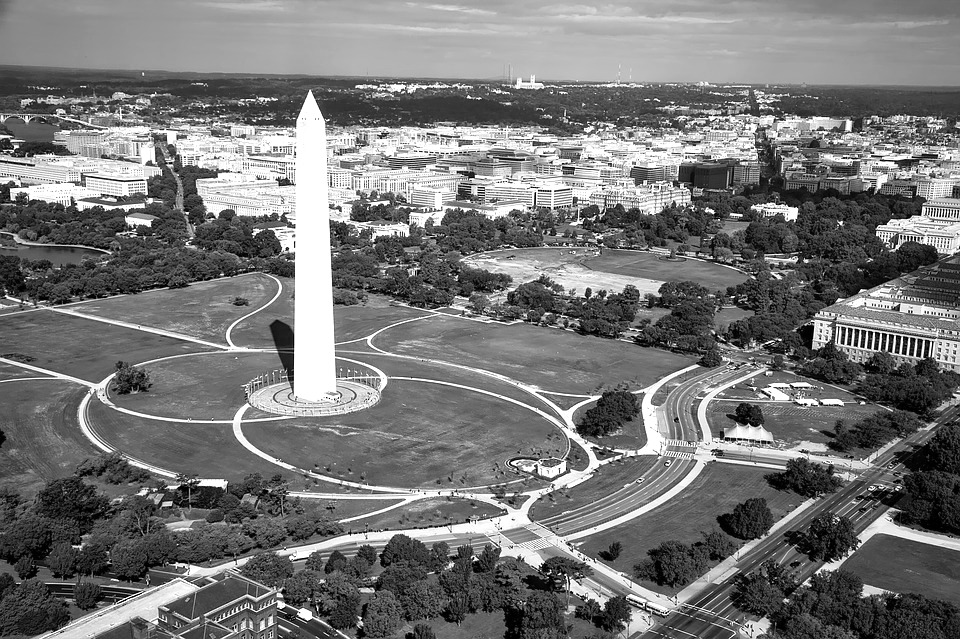President Trump’s schedule (EST):
11:30 AM: Signs an anti-human trafficking bill, H.R.2200;
12:00 PM: Daily intelligence briefing;
1:00 PM: Attends the Senate Republican policy luncheon, S-207, The Capitol; and
3:00 PM: Meets with congressional leaders in the White House Situation Room.
Speaker Pelosi and Senate Minority Leader Schumer will hold an 11 AM press conference. Reiterating their demands before their 3 PM White House meeting with President Trump is hardly a sign of compromise on ending the shutdown.
Transcripts of last nights addresses: President Trump (fact sheet); Speaker Pelosi and Senate Minority Leader Schumer.
“U.S.-China Trade Talks Conclude on Optimistic Note.” This morning’s Bloomberg article led with:
China and the U.S. wrapped up three days of trade talks and are reportedly coordinating how to characterize the results publicly as officials from both nations expressed optimism that progress had been made.
People familiar with the discussions said positions were closer on areas including energy and agriculture but further apart on harder issues. As of 8:25 p.m. in Beijing, neither the Chinese side nor the Americans had released a statement — a possible sign of message coordination as the U.S. delegation returned to Washington.
Stocks rose across Asia and Europe, and equity futures indicated an increase in the U.S. on Wednesday, on signs the world’s two largest economies are trying to resolve their trade war.
Chinese foreign ministry spokesman Lu Kang said a one-day extension in talks showed both sides are serious about the talks. Some disagreements remain on structural issues and they need to be addressed when more senior negotiators meet later on, according to Chinese officials involved in the discussions who asked not to be identified.
The editor-in-chief of the Global Times, a state-run Chinese newspaper known for its nationalist leanings, said on Twitter around 4 p.m. in Beijing that he’d heard the two sides were still consulting on the wording of coordinated statements.
China and the U.S. plan to release a message on trade talks at the same time Thursday morning in Beijing, he said later in another tweet. The talks, though arduous, were conducted in a pleasant and candid atmosphere, he said.
Later this month, U.S. Trade Representative Robert Lighthizer is expected to meet with Vice Premier Liu He, President Xi Jinping’s top economic aide who is leading negotiations for China, a person familiar with the situation said last week. Liu made a brief appearance at the talks in Beijing on Monday, boosting optimism that China was serious about making progress on a deal.
“Weakest Treasuries Demand Since 2008 Sends Bond-Market Warning.” This morning’s Bloomberg article led with:
As the U.S. government kicks off its debt sales this year, here’s one potentially worrisome sign for traders to keep in mind: the steep decline in demand at its bond auctions.
Of the $2.4 trillion of notes and bonds the Treasury Department offered last year, investors submitted bids for just 2.6 times that amount, data compiled by Bloomberg show. That’s less than any year since 2008. The bid-to-cover ratio, as it’s known, fell even as benchmark Treasury yields soared to multi-year highs in October, before falling back to their lows last month.
Granted, it’s not as if the U.S. will have trouble borrowing as much as it needs. And there’s little in the data to suggest weak auctions lead to bond losses. Yet the drop-off serves as an early warning that demand for Treasuries may not keep up as the U.S. goes deeper in the red. Debt supply jumped in 2018 largely because of the Trump administration’s tax cuts. Forecasts show the deficit could soon swell past a trillion dollars and stay that way for years to come.
The weakness “doesn’t matter until it suddenly does,” says Torsten Slok, Deutsche Bank’s chief international economist. “A declining bid-to-cover ratio increases the vulnerability and probability that investors suddenly will begin to think that a falling bid-to-cover ratio is important. Put differently, all fiscal crises begin with a declining bid-to-cover ratio.”
The first note auction of 2019 did little to ease those worries. The Treasury sold $38 billion of three-year notes Tuesday, matching the biggest sale since 2010. The bid-to-cover ratio was the lowest since 2009. It will follow up Wednesday with a $24 billion sale of 10-year notes, which yield 2.73 percent.
The Treasury has boosted its auctions for four straight quarters, surpassing levels last seen in 2009. What’s more, the U.S. has grown more reliant on the public to finance its deficit as the Federal Reserve scales back its purchases of Treasuries to shrink its $4 trillion of crisis-era bond holdings.
To some Wall Street observers, the drop in bid-to-cover ratios is merely a mathematical necessity rather than a cause for alarm.
“We’ve seen record high auction sizes, so decade-low bid-to-cover makes sense,” said Ian Lyngen, head of U.S. interest-rate strategy at BMO Capital Markets. “I would expect, mechanically, for bid-to-cover ratios to come down, just because there’s not endless, insatiable demand out there for Treasuries.”
Lyngen says he’s on the lookout for so-called tails for signs of stress at auctions. A tail occurs when the auction yield is higher than the prevailing market rate for the securities at the time bids close. And a larger tail indicates that bond investors are demanding a bigger concession for the offering.
$11 b. deficit estimate for the 2 PM January 11th Monthly Treasury Statement. Yesterday afternoon’s Congressional Budget Office Monthly Budget Review estimated December’s receipts at $312 b. versus $326 b. in December, 2017 and outlays of $324 b. versus $349 b. However, adjust for calendar effects in both periods would have shown a $32 b. jump to $36 b. in December, 2018 from $3 b. in December, 2017. There’s little doubt FY19 will record a $1 tr. deficit.
“Highway and transit projects grind to a halt as the shutdown continues.” Yesterday afternoon’s Washington Post article led with:
Highway construction projects across the country have been jeopardized by the federal shutdown as state officials hesitate to authorize projects planned for 2019 without the assurance of federal funding.
“If this continues to drag on it will have real impacts, not only on a state’s ability to build new projects but also on their ability to operate the system that they currently have,” said Jim Tymon, executive director of the American Association of State Highway and Transportation Officials. “Eventually it’s going to have an impact on operations and maintenance.”
The percentage of federal funding that states rely on varies from one jurisdiction to the next, with states such as Montana and New Mexico getting more than 85 percent of their funding from Washington, while states such as New Jersey and Texas get a third or less of their outlay from the federal government.
Normally, federal money for highway projects becomes available when the fiscal year begins on Oct. 1. But the government was running on a continuing resolution, rather than a normal appropriation, and that ran out Dec. 21, ending the flow of highway money to state governments.
That means that only a quarter of the $44 billion for highway projects and $11 billion in federal transit programs was paid at the outset of the fiscal year.
“With the construction season coming up on us, states are usually bidding projects over the winter so they’re ready to put shovels into the ground as we get into the end of winter or early spring,” Tymon said.
Working under a continuing resolution also stagnates federal funding at 2018 levels, creating an additional shortfall, because Congress had added money for roads and transit for 2019. That, added to the uncertainty of a government shutdown, means state and local governments will prioritize maintenance and operations while waiting for Washington to reopen the spigot.
2018 Election: “What’s The Holdup In That Unresolved North Carolina House Race?” This morning’s FiveThirtyEight article concluded:
With the new delays in the investigation and the potential need for three rounds of voting (a primary, a runoff and a general), it’s now possible that the 9th District’s representative to the 116th Congress won’t be chosen until November 2019.







